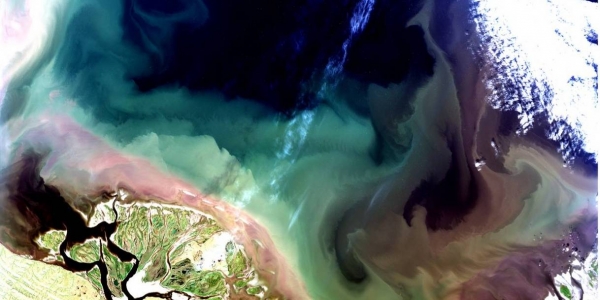The Arctic experiences some of the most rapid climate changes on the planet, resulting in significant sea-ice melt. This transformation exposed the Arctic Ocean to increasing sunlight, driving a 56% rise in organic matter production through photosynthesis (net primary production) over the past two decades, according to remote-sensing studies. At the same time, permafrost thaw is accelerating due to warming, releasing more nutrients and carbon into the Arctic Ocean, delivered from rivers and coastal erosion. While it might seem logical that these additional nutrients would enhance the ocean’s biological carbon pump, - boosting carbon uptake and long-term storage of carbon - a new study in Nature Climate Change by experts from the Alfred Wegener Institute reveals a surprising outcome. Instead of strengthening, the carbon pump is being weakened. The researchers found that intensified recycling processes and ecosystem impoverishment are undermining the pump’s efficiency, challenging assumptions about the Arctic’s ability to store carbon in a warming world.
For their study, the researchers employed a cutting-edge, high-resolution ocean biogeochemistry model that incorporates carbon and nutrient inputs from both rivers and coastal erosion – an approach that enables groundbreaking future projections. “These terrigenous inputs, and their impacts on biogeochemical cycles, are currently overlooked in the models used by the Intergovernmental Panel on Climate Change”, explains Dr. Laurent Oziel, lead author and modeler at Alfred Wegener Institute, Helmholtz Centre for Polar and Marine Research (AWI). “In our study, we focused on the future evolution of the biological carbon pump and the biological processes that transport carbon from the surface ocean to the deep ocean, where it is stored in the long-term.”
Satellitenbild das den Fluss Olenyok zeigt. Er führt dem Arktischen Ozean hohe Konzentrationen an Nährstoffen und Kohlenstoff aus aufgetautem Permafrost zu. (Photo: Bennet Juhls)
Sci/Tech Top Stories Climate

